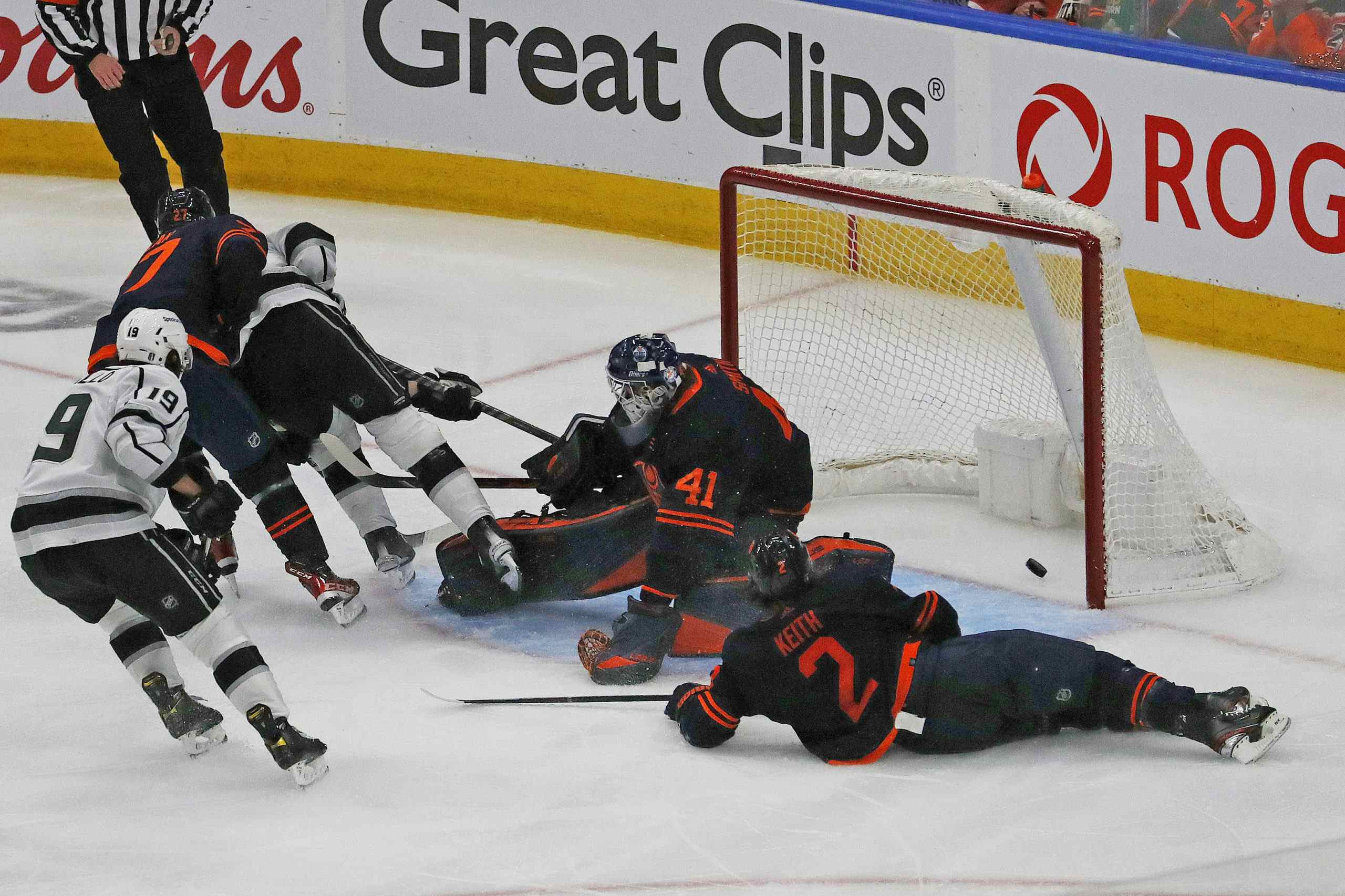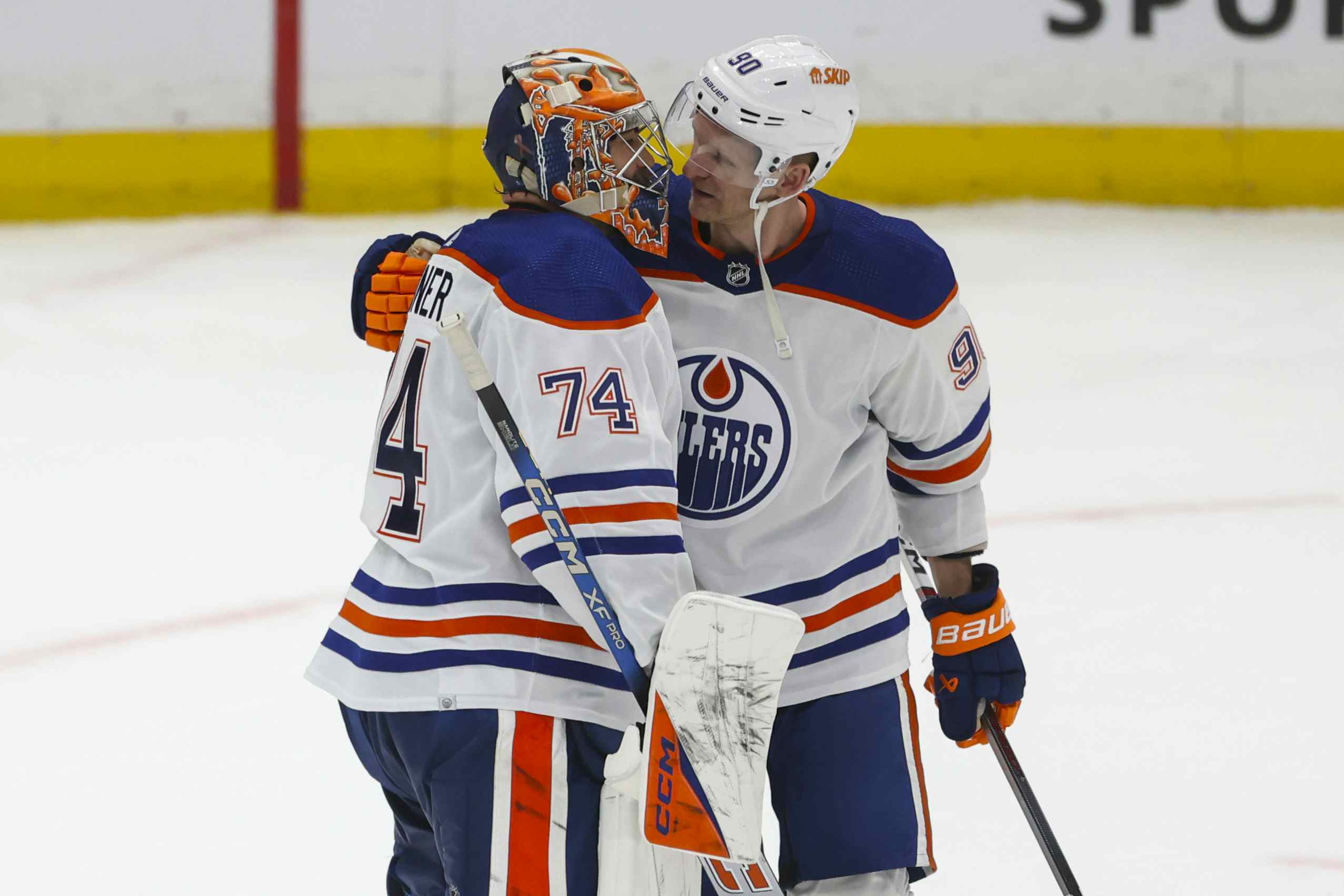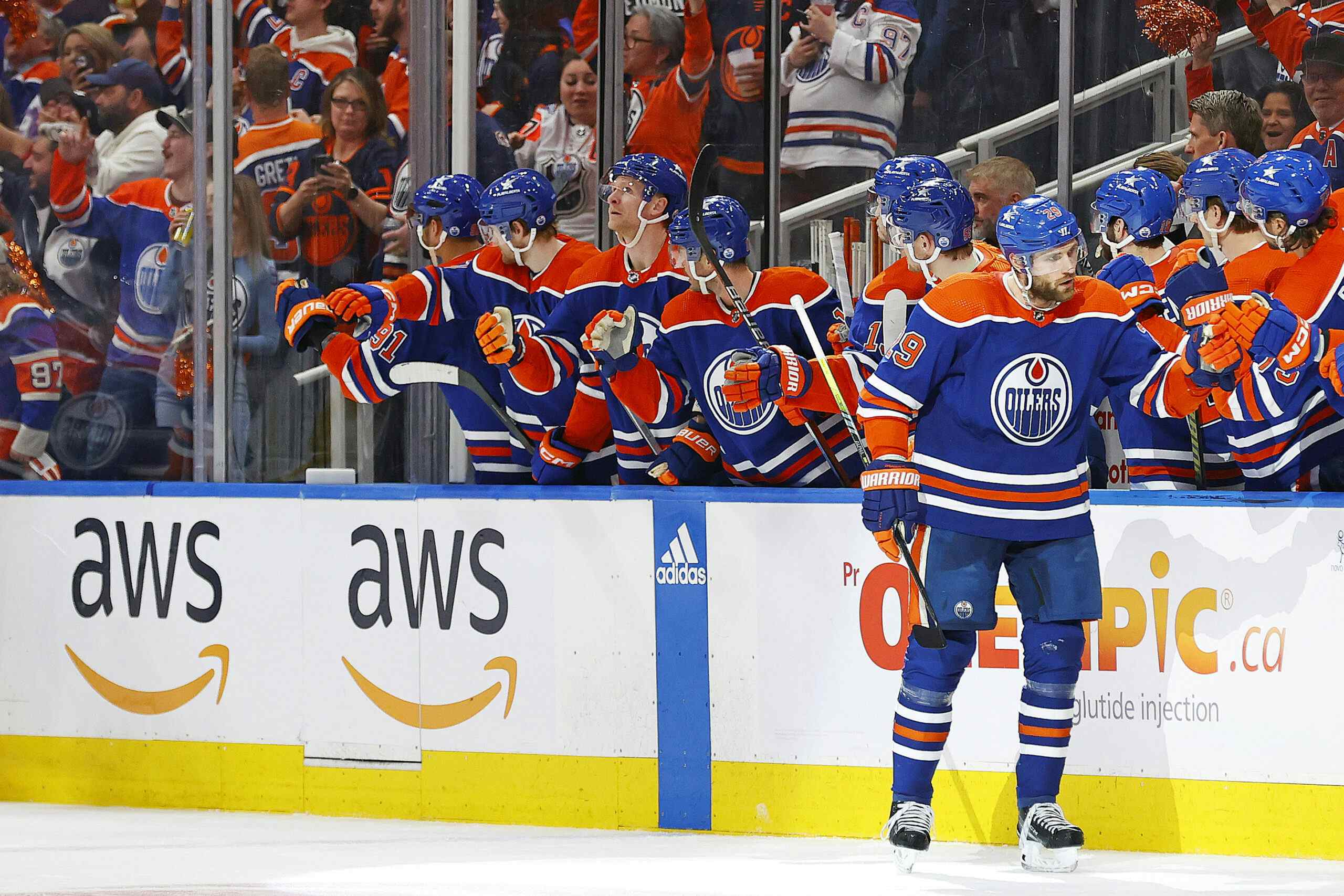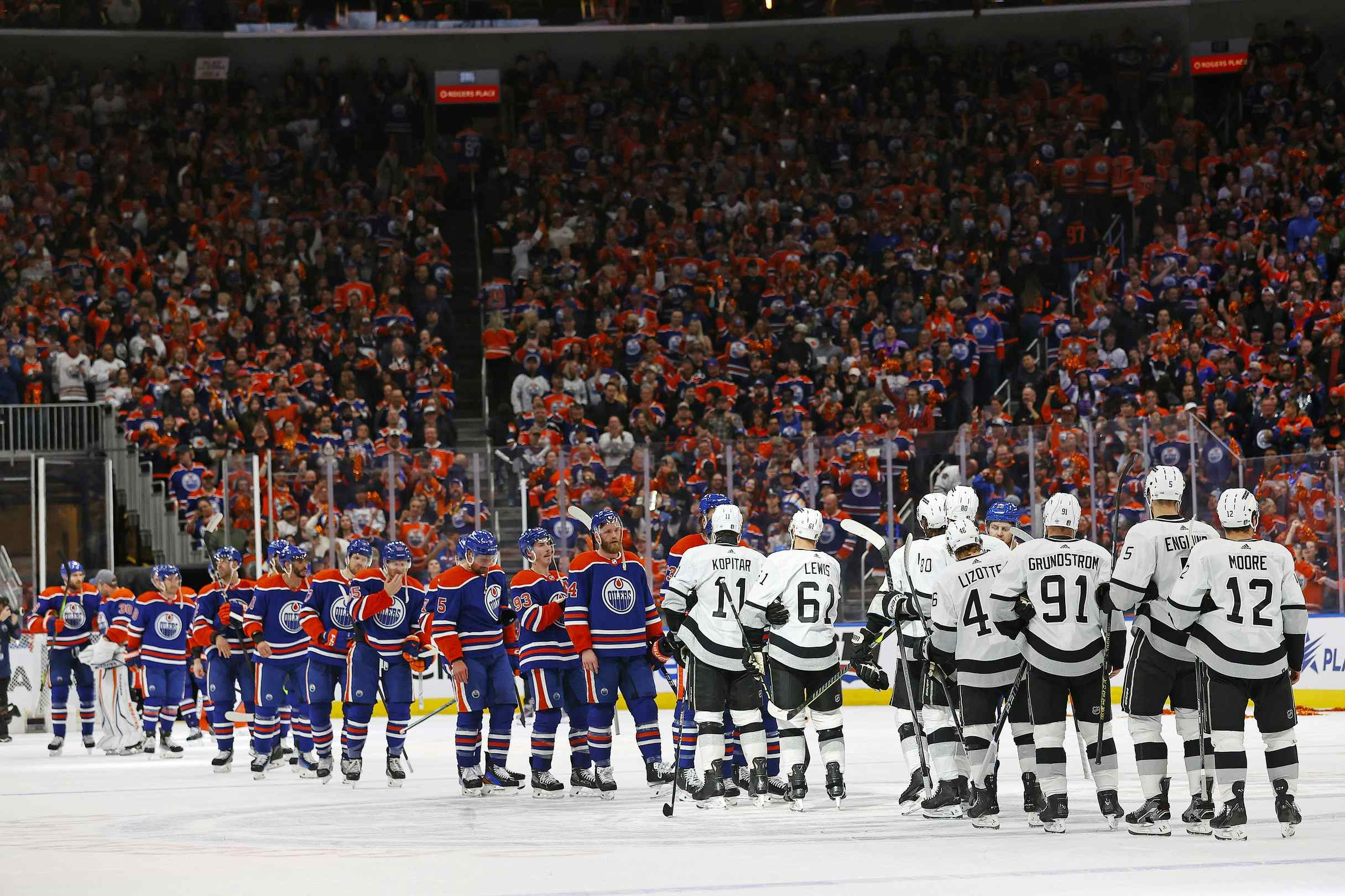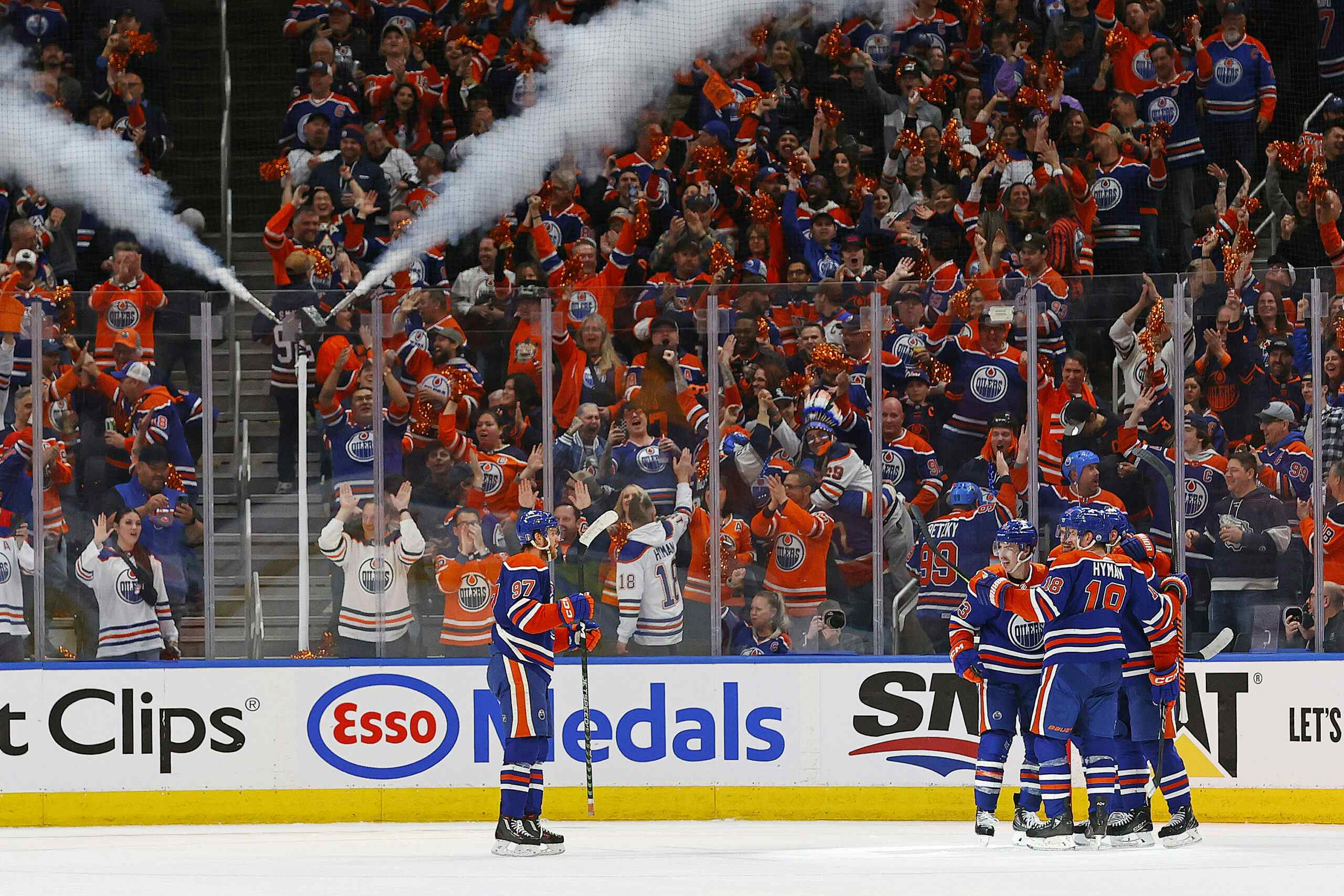2013-14 Division Rivals: Edmonton Oilers vs. Los Angeles Kings
Nail Yakupov found some magic against the Kings last year – but how do the Oilers as a team look to matchup against Los Angeles this coming season?
As with previous looks at the Anaheim and Vancouver, I’ve included one basic statistic at each position on the depth charts below. For forwards, I’ve used points from last season projected over an 82-game schedule, for defencemen time on ice per game in 2012-13, and for goalies their 2012-13 save percentage. Players in italics did not play a significant number of games in the NHL in 2012-13; red indicates numbers come from the AHL or Europe while green indicates a previous NHL season. And again, the same caveat: these depth charts are my best approximation of each team and the line combinations should not be seen as definitive.
Forwards

The Kings’ top line, despite less than overwhelming offensive totals, is a superb group. Anze Kopitar is the complete package at centre, while Dustin Brown is a physical presence, a competent scorer, and the league’s most efficient penalty-drawing machine. Justin Williams is simply an outstanding hockey player – particularly at even-strength – and contributes in all areas. In terms of flash, Edmonton’s top line outshines them, but they don’t bring the complete game the Kings’ group does.
Mike Richards and Jeff Carter are both capable of playing first-line minutes; they’ll likely play together on a second line with a winger yet to be determined. Regardless of whether that winger is Frattin or Toffoli or Pearson or Clifford or King, this line should fare well in an auxiliary role.
The Kings’ bottom stands up pretty well too and certainly outshines the Oilers’ group. Jarret Stoll has morphed into a defensive workhorse over the course of his career, and he, Dwight King and Trevor Lewis have formed an effective third line in recent years. Pearson and Toffoli give the Kings offensive options, Clifford’s a physical presence who can play and the rest aren’t asked to do more than they’re capable of doing.
It’s almost the same group that won the Stanley Cup two years ago, and there’s a lot to like about it. The Oilers don’t have any reason to be ashamed of their collection of forward talent but their group needs more depth, better defensive play and probably an infusion of some size and pugnacity to match the Kings.
Defence and Goaltending

The Kings’ blue line isn’t really all that different from the Oilers – it has a good, competent group at the bottom and some question marks in the top-four. The difference is Drew Doughty, who is in the conversation as the game’s best defenceman; he makes the entire group better. The presence of Doughty and a good depth group is why the Kings feel they can take chances with a past-his-prime Robyn Regehr and Willie Mitchell (who didn’t play last year).
Minus Doughty, and the Oilers might have a slight edge defensively. Add Doughty to the mix, and it isn’t close.
In net, Jonathan Quick is likely neither as good as he looked in 2011-12 (prompting Los Angeles to sign him to a decade-long contract) or as bad as he looked during the 2013 regular season, where he posted a miserable 0.902 save percentage and was a key reason the Kings didn’t enter the playoffs with home ice. In my opinion, the goaltending matchup between Los Angeles and Edmonton is closer than the respective reputations of Quick and Dubnyk would suggest, but I would still give the Kings the edge.
Overall
Last year, the Kings weren’t among the West’s elite largely thanks to the struggles of Jonathan Quick. Quick’s likely to bounce back, and the core of the 2012 Stanley Cup champions remains in place.
Either a lot has to go right, a lot has to go wrong, or both for the Oilers to have a realistic shot at surpassing Los Angeles this season.
Recently around the Nation Network
Does a big step forward – or, conversely, a step backward – in a player’s first year after being drafted give a strong indication of his NHL future? At Flames Nation, Justin Azevedo argues that it does:
Taking a step back in a +1 year might not mean a given player is significantly less likely to make the NHL, but it does suggest that he is a lot less likely to be elite and/or will probably be replacement level. To me, it seems there is enough evidence to suggest that the bigger the step forward, the better chance a player has to join elite company. There also seems to be a correlation between an increase in NHLE in a player’s +1 year and the quality of the player overall. Of course, there are exceptions, but if you’re drafting players and expecting exceptions you’re probably doing something wrong.
Click the link above to read more, or check out some of my recent stuff:
Recent articles from Jonathan Willis

